The situation is not uncommon and occurs more often than we would like. One defective photovoltaic module in the middle of a string needs to be replaced. Broken glass, delamination and cracked cells are some of the reasons that can lead to replacing a photovoltaic module.
It often takes a while for the defect to be noticed. Typically, the problem will be discovered during a thermographic inspection routine or because some irregularity in the generation graph was noticed on the monitoring platform.
Even if an irregularity is detected, it is not always clear where it is. In the middle of several strings, it is necessary to somehow identify the faulty module.
The problem can be located by electrical inspection of strings, tracing the IV curve of all strings that are connected in parallel or, at least, measuring the open circuit voltage and short circuit current of all of them.
In some cases the problem is identified only by a visual inspection (this is the case of broken glass or a module with bubbles) or a thermographic inspection, which indicates the existence of a hot spot in the defective module.
Even if the defective photovoltaic module is in perfect working order, with its electrical characteristics still preserved, it will be a source of headaches in the future and needs to be replaced as quickly as possible.
The subject we want to cover in this article is how to replace a defective photovoltaic module with another
The first action that comes to mind is to look for an identical module from the supplier. We know this will almost never be possible. With the rapid evolution of the photovoltaic industry, a module that is currently available from suppliers could be an obsolete product in six months, already displaced by products with greater power or greater efficiency.
The situation we face is illustrated in the figure below. The number of strings or the number of modules in each string can be anything. The problem is the same: how to remove a faulty module and replace it with another safely?
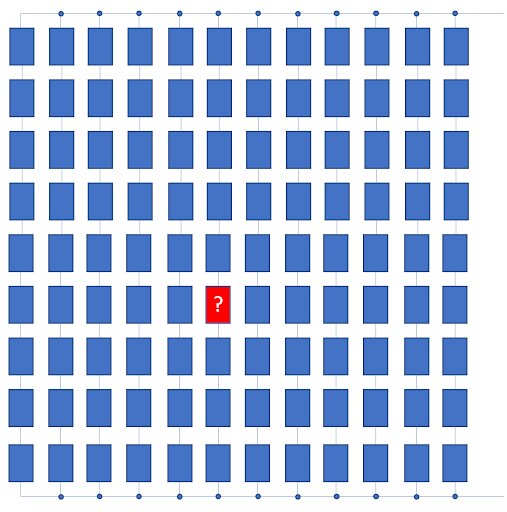
Replace photovoltaic module: is it allowed to mix different modules in the same string?
The answer to the above question is no. In photovoltaic system projects, different modules should not be mixed, whether in series or parallel. Modules of different models and manufacturers they can have different numbers of cells and different open circuit voltages, which can give rise to a potentially dangerous phenomenon: reverse current.
In practice, we will only encounter a real situation of mixing modules if there is a need to replace broken or defective modules.
Is it possible to exchange the old module for a module different from the original model? Yes, you can replace a faulty module with a different one, but some care must be taken.
In the graph below, we show what can happen when two modules with different short-circuit currents (Isc) are connected in series. Module A has a higher current than module B and both have the same number of cells and identical open circuit voltages (Voc).
In a voltage range greater than 7 V, the string has its current limited by module B, with the lowest current (Isc = 5 A). Below a certain voltage value (around 7 V), the diode bypass of module B will be activated and the maximum current (from module A, with Isc = 10 A) will be able to flow.
We plotted these graphs and drew these conclusions from a string with just two modules (with short-circuit currents of 10 A and 5 A), to illustrate the phenomena that occur in this composition.
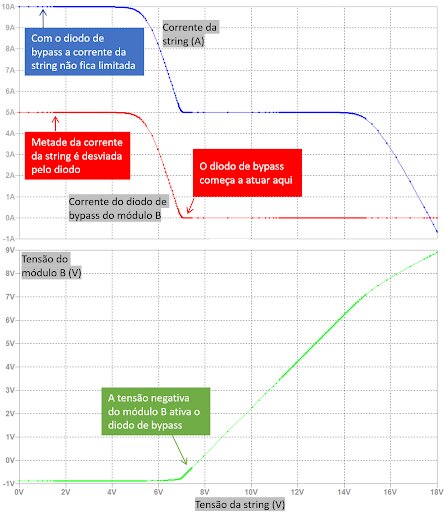
Now let's look at what happens when a multi-module string has a different module. We performed simulations of a system that has strings with 12 modules of 72 cells, all with Isc = 9.
The last module (No. 12) of one of the strings was replaced by another of a different current. Initially we placed 2 strings in the array and later carried out simulations with 4 strings. The simulations were carried out using PSIM software.
Two cases were initially analyzed (in an array with just 2 strings):
- Case I: one of the string modules has Isc = 12 A (higher than that of the original modules);
- Case II: one of the string modules has Isc = 6 A (lower than that of the original modules).
The results presented show that replacing the defective module with one with a higher short-circuit current (which is case I) does not generate any type of problem. The only fact arising from this mixture is that the module with the highest current will operate with a voltage slightly higher than that of the other modules.
From the string's point of view, everything works normally. The string has a perfect IV curve and presents a maximum power point that can be easily tracked by the inverter. In case II, we observe that the mixture of modules produces an IV curve in the string with two maximum power points (MPP).
In MPP1 highlighted in graph (d) of case II, the module with the lowest current limits the current of the others. It is very likely that the vast majority of inverters will put the string and the entire arrangement into operation at this point, which represents a considerable loss of generation for the system.
Assuming that the inverter has the ability to track the global maximum power point (some inverters do this), the MPP2 highlighted in graph (d) of case II will be achieved. In this case, the bypass diode of the lower current module will be activated and the string will reach a higher current.
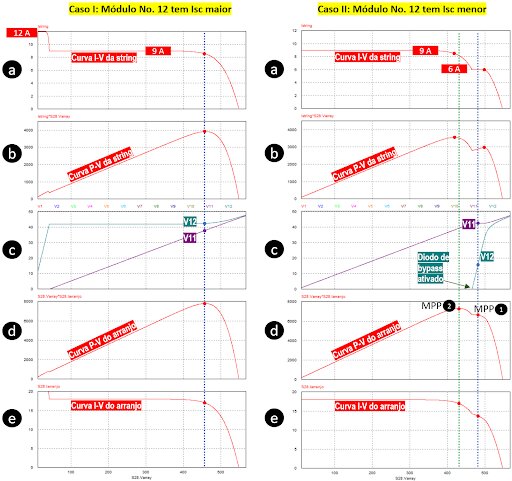
It is interesting to note that a single problematic module in just one string of a photovoltaic array can disrupt the operation of the entire array. The graphs for cases I and II shown in the previous figure were produced with two parallel arrangements.
Below are illustrated the IV curves of arrangements with different numbers of strings (from 1 to 4), with one of the strings having a module with a lower current. The problematic string disrupts the entire arrangement, as expected. The contribution of this string is reduced as the number of strings in the array increases.
In a system with a large number of strings, replacing a module with another with a lower short-circuit current in one of the strings may not cause noticeable problems.
Obviously, that string will operate outside its maximum power point – as can be seen in graphs (a) and (b) of case II, in the previous figure – but the entire arrangement will not suffer much.
However, this is not a desirable situation in any case. On the other hand, in systems with few strings, the contribution of the problematic string can cause considerable disruption to the entire arrangement.

In a real situation, the replacement module must have characteristics close to those of the original module. The first selection criterion for replacing a broken module must be the search for a module with similar power and the same number of cells. Next, the short-circuit current must be observed. The current Isc of the replacement module must be greater than the current of the original module.
To create the previous graphs, we intentionally chose modules with a difference of 3 A (Isc = 12 A and Isc = 6 A) in relation to the original modules (Isc = 9 A), to produce extreme situations. In practice, the differences between the currents will always be smaller. See, for example, the characteristics of some modules shown in the following table.
The table shows the characteristics of photovoltaic modules that were analyzed for a real case of replacing a defective module. The original module has a power of 335 W and the models initially suggested for replacement have powers of 365 W and 345 W.
In addition to the powers, the open circuit voltages (Voc) of all of them are very close, indicating that they all have the same number of cells. The main and last criterion to be analyzed when choosing the replacement module is the short circuit current.
The two replacement suggestions shown in the table are suitable, as both have a higher short-circuit current than the original module, although the difference between the currents is small. This is the rule that we must follow when replacing defective modules in photovoltaic systems.
And when we don't find a module with very close power? Can we perform the replacement anyway?
Let's analyze another situation, in which a 390 W module is proposed to replace the original 335 W module. There is a non-negligible discrepancy between the two powers, but is this a problem?
Both modules have 72 cells and have relatively close open circuit voltages (45.8 V and 49.3 V). The short-circuit current of the new module is greater (10.12 A) than that of the original module (9.54 A), so based on this criterion we could safely replace it.
The doubt still lies in the power discrepancy. Although replacement with a module of similar power is recommended, to ensure maximum compatibility between the modules, the simulation results shown below show that we can, indeed, adopt a different power module for replacement, always respecting the criterion of short circuit current.
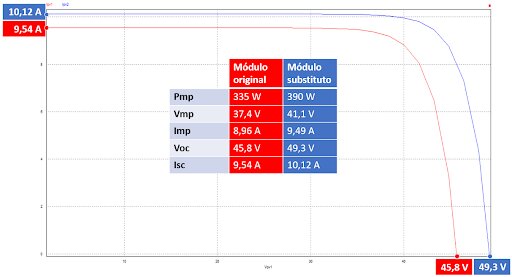
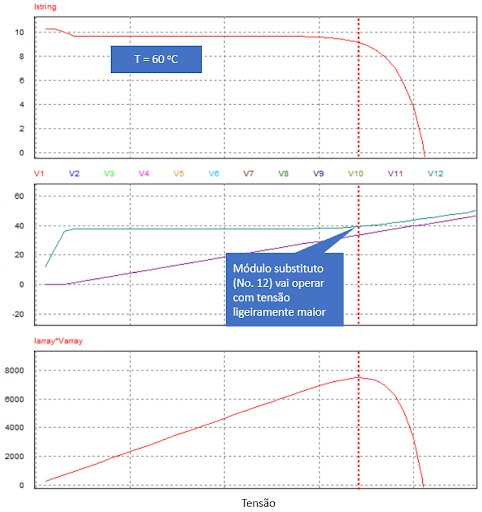
Finally, one last question we could ask is about the behavior of the string with temperature variation, especially in this case where we are using modules with a large power discrepancy.
The graphs shown so far consider a cell operating temperature of 25 ºC. We know that in no practical situation will a module operate at this temperature.
The following figure illustrates the result of a simulation with a temperature of 60 ºC. The situation repeats itself, without any surprise: the replacement module operates at a slightly higher voltage than the others and the replacement of the damaged module can be carried out safely.
Conclusions
Replacing a module in a string with another with a lower short-circuit current (Isc) is not recommended, as this causes disruption to the string and the photovoltaic array as a whole. In this case, multiple points of maximum power arise, which can make the operation of the photovoltaic system difficult.
On the other hand, replacing a module in a string with another with a higher short-circuit current (Isc) does not cause problems. Preferably, when replacing, a module with power and open circuit voltage (Voc) close to those of the original module should be used, to preserve the characteristics of the string.
However, some power discrepancy is allowed as long as the other characteristics of the modules are similar (number of cells, open circuit voltage) and the replacement module has a higher short-circuit current.
In summary, replacing a defective module of a string must follow the following criteria. The replacement module must have (relative to the original module):
- Compatible peak power;
- Same number of cells;
- Similar open circuit voltage (Voc);
- Higher short-circuit current (Isc).
Compliance with the four criteria listed above, especially the last one, guarantees that the replacement of a defective module of a string can be done with absolute safety.


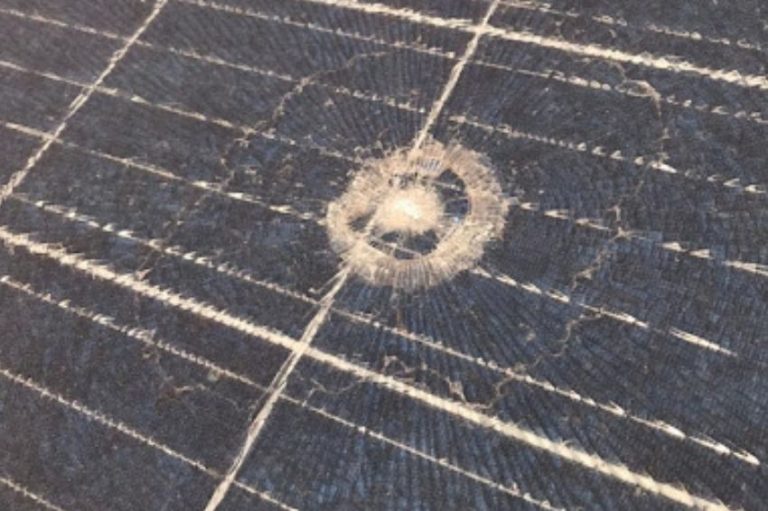

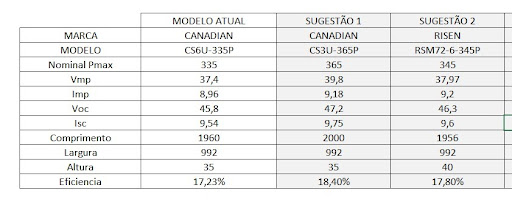
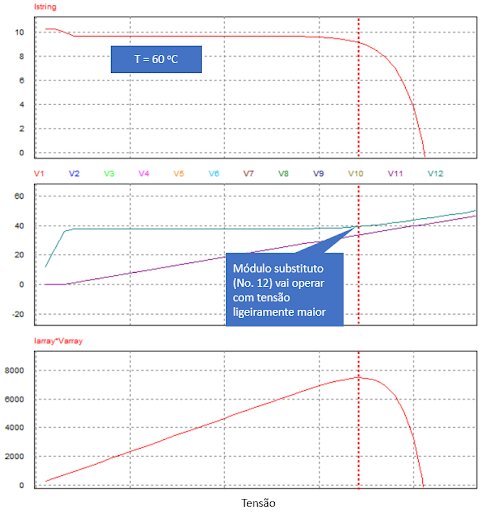



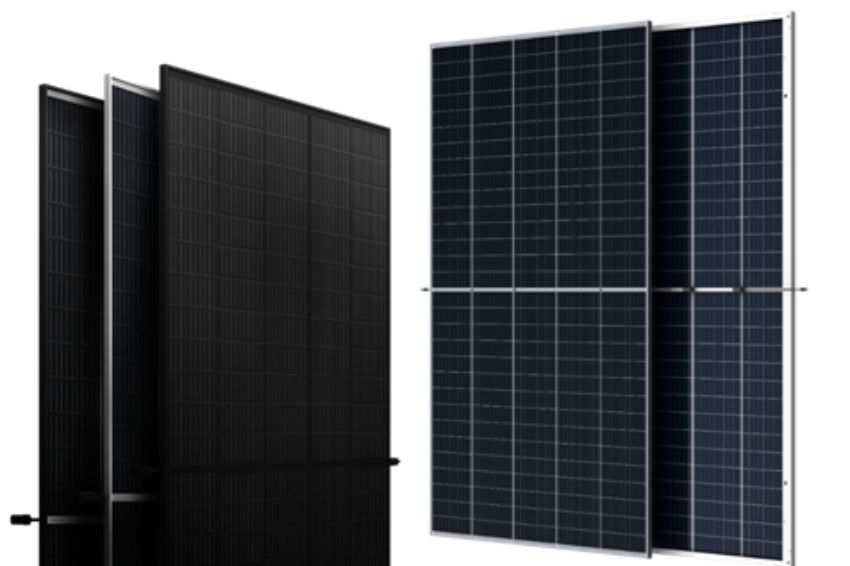

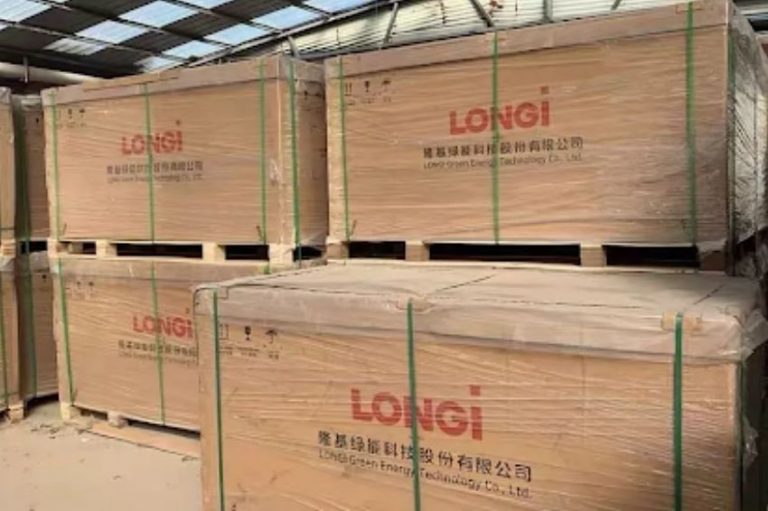







2 Responses
Good afternoon
Is there any work or article published that I can cite and use as a reference in my work??
By the way, great work and information
Thanks
Excellent work, Professor Marcelo, very didactic, objective and conclusive.